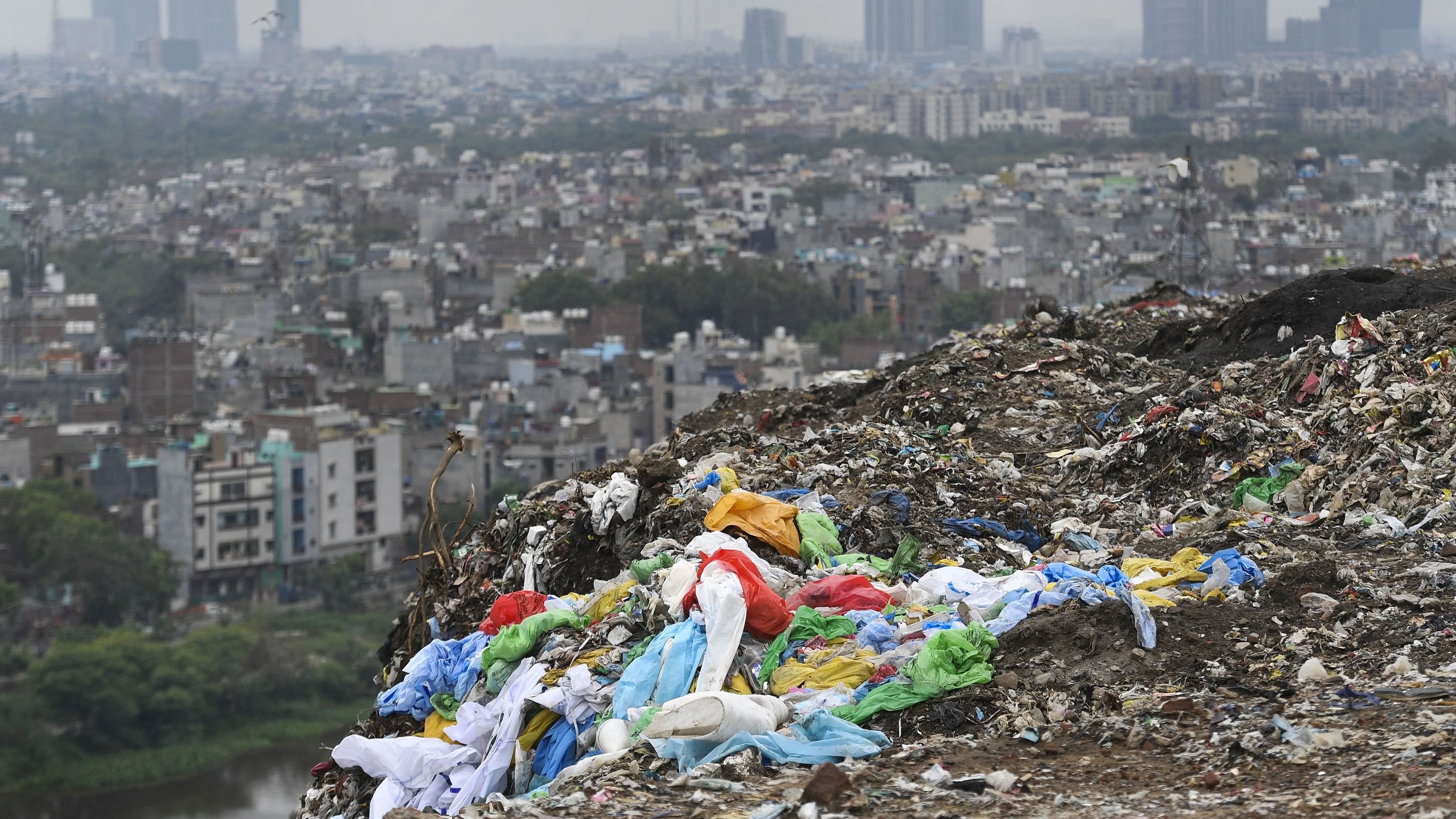
Representative image of dumped waste.
Credit: PTI Photo
India should conduct a nationwide study to accurately estimate methane emissions from legacy waste dumpsites and organic waste processing facilities, and urgently phase out biodegradable waste disposal in landfills, a new report by the Centre for Science and Environment has recommended.
The independent think tank's report, titled 'Methane Emissions from Open Dumpsites in India: Estimation and Mitigation Strategies', also stresses the importance of creating robust markets for reduced-emission products generated from organic waste processing and promoting carbon credits for biomining projects.
A key concern raised in the report is the unreliability and inconsistency of data related to municipal solid waste and methane emissions. To address this issue, the report suggests using the first-order decay (FOD) method, which relies on field data and primary research to more precisely estimate methane emissions from landfill sites.
"A pan-India study needs to be conducted on estimation of methane and other GHGs (greenhouse gases) from each of the legacy waste dumpsites and organic waste processing facilities. There is a lack of data on the quantity of methane originating from the dumpsites and other waste management-related activities."
"Creating a system of comprehensive methane measurement and monitoring strategies will enable policymakers and regulators to develop data-driven, science-based targets to reduce methane emissions from the waste sector, especially from dumpsites," the CSE said.
In its report, the environmental think tank has emphasised the need to phase out the disposal of biodegradable waste in landfills and advocated for robust policies to incentivise waste diversion through source separation and the development of critical infrastructure for biodegradable waste treatment.
Large-scale anaerobic digestion facilities are highlighted as a necessity to keep biodegradable waste out of landfills, reducing the burden on downstream mitigation technologies.
The report also highlights the need to promote carbon credits for biomining projects and mandates estimating methane potential from capped landfills and dumpsites.
Currently, there is a lack of monitoring of methane flux from existing landfill facilities and fugitive gas emissions from bio-digesters and biogas storage balloons in biomethanation plants.
The CSE has also advocated for afforestation on reclaimed bioremediated land, emphasising its role as a carbon sequester to mitigate emissions.
"Afforestation should be promoted in the reclaimed bioremediated land — recovered after biomining of legacy waste dumpsites. The green cover developed on the reclaimed land will act as a carbon sequester."
"According to BUR-3 (third biennial update report) submitted by the Government of India, forest and tree cover sequestered 331 million tonnes of CO2 in 2016, which is around 15 per cent of the total CO2 emissions in the country," it said.
Methane is a potent GHG with a much higher global warming potential than carbon dioxide (CO2). Its atmospheric concentration has more than doubled over the last two centuries primarily due to anthropogenic activities.
Methane has a relatively short lifespan — of approximately 12 years — in the atmosphere. However, its global warming potential (GWP) — the ability of the gas to trap heat in the atmosphere — is 25 times more than CO2 and it has been second only to CO2 in causing climate change during the industrial era.
Landfills are the third-largest source of methane emissions globally, after oil and gas systems and agriculture. Landfill waste management worldwide accounted for an estimated 1.6 billion tonnes of CO2e (CO2 equivalent) in 2016.
According to a report by the World Bank, this number is expected to reach 2.6 billion tonnes of CO2e by 2050.
CO2e means the number of metric tons of CO2 emissions with the same global warming potential as one metric ton of another greenhouse gas, according to the United States Environmental Protection Agency.
As per India's third biennial update report (BUR), the country's methane emissions in 2016 (excluding land use and land-use change and forestry) stood at 409 million tonnes CO2e. Of this, 73.96 per cent came from the agriculture sector, 14.46 per cent from the waste sector, 10.62 per cent from the energy sector and 0.96 per cent from the industrial processes and product use sector.